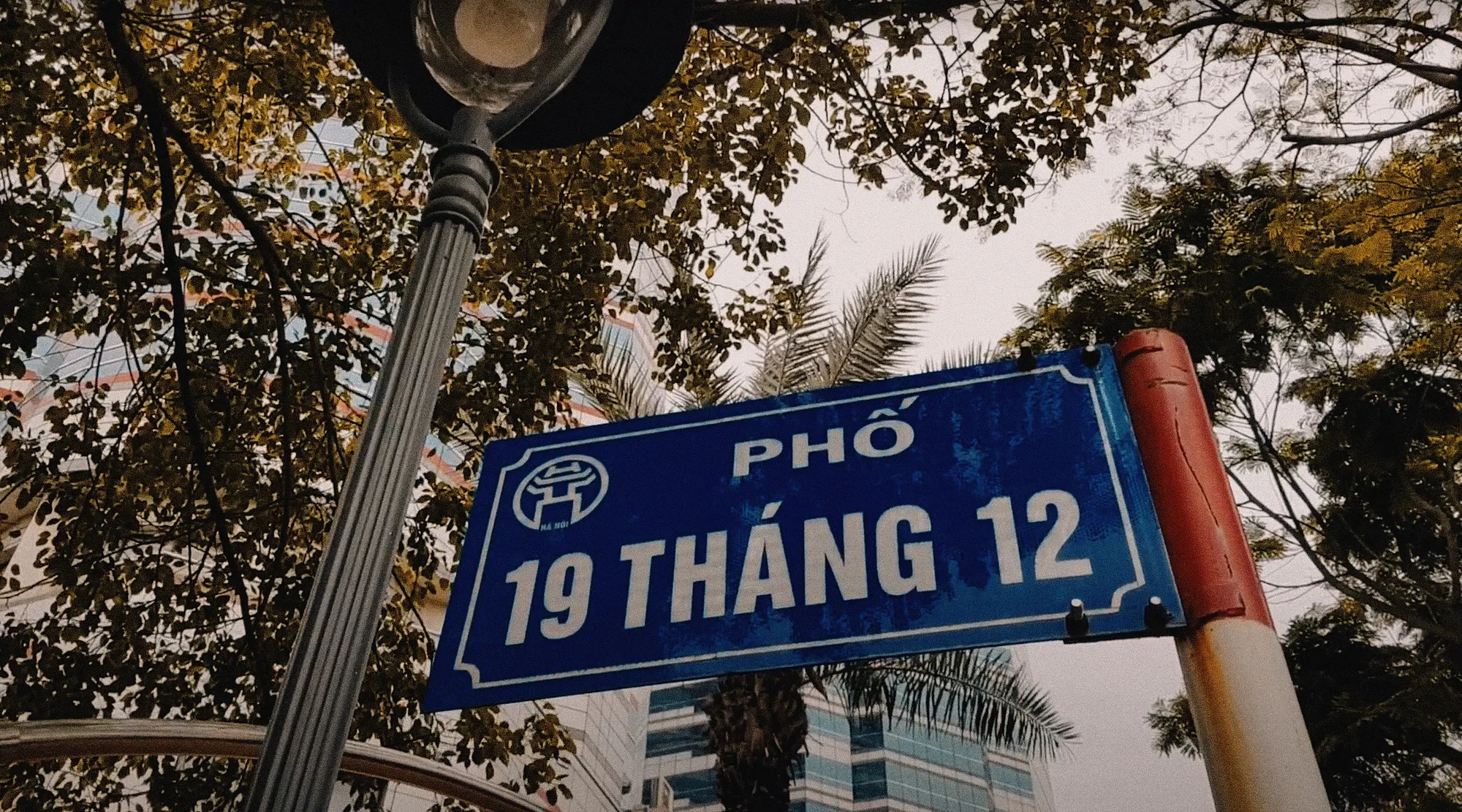More often than not, a country’s independence is won with guns. The location where the first shots were fired for Vietnam is memorialized to this day.
Tucked at the end of a small alleyway, Pháo đài Láng, or Fort of Láng, is surrounded by houses and apartment buildings. With no venerable battlement, the only structures here are a small memorial hall and a nondescript artillery mount.
The artillery, a 75mm anti-aircraft gun, is set in concrete at the center of a hollow mount where a stone plaque reads: “At 20:03 on December 19, 1946, Pháo đài Láng fired the first shots at the French army in the Hanoi Imperial Citadel, beginning the nationwide Resistance War. This was one of the two guns of the fort back then — a memorial for the ‘Brave Death for the survival of the Fatherland’ spirit of the people of Hanoi.”

The last gun at Pháo đài Láng. Photo by Linh Phạm.
The place that heralded Vietnam’s Resistance War was built by the French in 1940. Upon taking the land from the people of Láng Trung Village (now Láng Thượng, Đống Đa District), they erected the pháo đài to ward off Japanese air attacks. After the August Revolution in 1945, the Việt Minh, or League for the Independence of Vietnam, claimed the fort.
On June 29, 1946, the Pháo đài Láng platoon was formed, led by Nguyễn Ứng Gia. However, they lacked equipment. Though a place meant to specialize in long-range artillery, they did not have a sighting device, binoculars, or even a radio. Gia had to borrow things like a tapeline from a tailor and a compass from a geomancer.

The compass used at the fort. Photo by Linh Phạm.
One day, General Võ Nguyên Giáp came to visit the fort. Lieutenant Gia reported: “Without sighting equipment, we drew a circle on cardboard and marked the degrees. Then we put the cardboard on a map to find firing directions.” General Giáp replied, “Comrades, you must be more creative. When needed, you can lower the barrel and fire directly at the incoming enemies. But always remember to maintain and protect the weapon.”
Between 1945 and 1946, Vietnam and France struggled to redefine their relationship. The former wanted its independence recognized, while the latter wanted to protect its interests in Indochina. Tensions built with events like the Hải Phòng incident, which left 6,000 Vietnamese civilians dead and eventually, all negotiations failed, leading to the inevitable war.
On the morning of December 19, 1946, France's General Morlière issued an ultimatum — the third one within two days — demanding Vietnamese forces disarm and concede Hanoi. The Vietnamese rejected the ultimatum and decided that the time had come for open conflict. That afternoon, the fort received the order: “Tonight, Pháo đài Láng will fire first. Order from above: at 20:00, our forces will bomb the Yên Phụ power plant, lights will go out in the city.”

Caption: Artillery formation in Láng, Hanoi ready to fire on French troops. Photo by Linh Phạm.
In an interview with An Ninh Thủ Đô, Đỗ Văn Đa, a member of the Pháo đài Láng platoon, reminisced about that day when the war began. “I still remember clearly, the afternoon of December 19, 1946, Gia told us, ‘Comrades, have early dinner tonight, afterward, get to your positions and await orders.’ It was a freezing winter night. We, the village boys from outside of Hanoi, more used to planting rice than holding guns, were so nervous. We could not imagine what battle would be like. At 20:03, the city plunged into darkness, Gia commanded: ‘Fire!’ For the first time, I got to hear the furious roar of ông Voi (Mr. Elephant, the gun’s nickname). My ears were numb but I didn’t stop reloading. Three bouts, six rounds, soared away. It was so cold but we sweated like pigs.”
The fort’s target was the French command complex in the Hanoi Imperial Citadel. But without a radio, they didn’t know if their rounds found their mark or not. It wasn’t until noon the next day that reports came in. “We were like kids,” Đa said. “Overwhelmed with joy when the scouts reported that we hit the targets in the citadel. The mothers and sisters bringing us food were also happy.”
“The next night, the French fired at us,” Đa continued. “Shells hit the village, houses were burnt, people died and were wounded. But the supply squad still brought food to the fort. The steaming rice was warm with the love of the people. On December 21, we shot down a plane. Comrade Võ Nguyên Giáp sent a letter of compliment: ‘To praise the spirit of the soldiers at the fort.’ Contributing to the feat of ông Voi are the people of Láng Trung Village, feeding us and maintaining the guns.”

People of Láng Trung supporting Pháo đài Láng, oil on canvas. Photo by Linh Phạm.
The conflict that Mr. Elephant started would become known as the Battle of Hanoi, the opening salvo of the anti-French Resistance War. This battle would also be his last. After 60 days of fighting, the Việt Minh withdrew from the city and prepared for a prolonged war. On January 11, 1947, Đa’s platoon received orders to disable the guns and retreat to Hà Đông.
More than 70 years have passed since those days of smoke and shells. Now, the only things falling on Pháo đài Láng are autumn leaves. Đỗ Đức Thành, the caretaker, tells Saigoneer that sometimes he has to sweep 40 kilograms of leaves a day. And in this time of peace, the fort faces a new kind of foe: poor urban planning. A road construction project is threatening to cut this national historic site in half. Hopefully, ông Voi will be protected this time.
This article was originally published on Urbanist Hanoi in 2020.
















